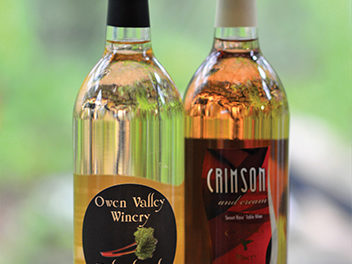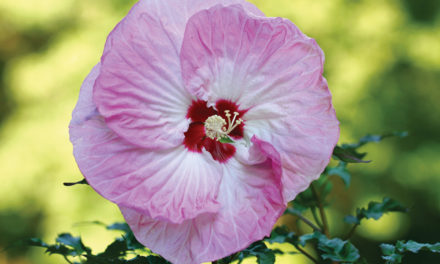
by SUSAN M. BRACKNEY
Linda Pride Thompson started with a ho-hum lawn, some maple trees, and pines—a near- blank slate when it comes to attracting wildlife. She and her husband installed scores of trees, native plants, and other necessities nearly 20 years ago. And now? “What tickles me to death is that the number of birds and butterflies in my yard has increased by an amazing amount,” Pride Thompson says.
Ditto for deer, coyote, and toads. “We even had a bald eagle,” she continues. “We were sitting around a campfire, and there it was. I nearly fell out of my chair.”
When she’s not watching wildlife, Pride Thompson works as Senior Environmental Planner with the City of Bloomington Planning and Transportation Department. During her 17-year tenure, she’s seen a shift from manicured monocultures to more naturalized habitats. (Spoiler: they aren’t always pretty.)
“It was a little tough in the beginning,” she remembers. “I was called out with the HAND [Housing and Neighborhood Development] Department pretty often during the spring and summer, because so many people thought naturalizing was just letting their yards go and not mowing. I hardly ever get calls like that anymore.”
Get Certified
While letting your yard grow wild may not be the best way to help local wildlife, there are steps you can take to make your property
a more hospitable space. Whether you’d like to help creatures with feathers or fur, stripes or spots, there’s likely an official certification for that—complete with optional yard sign to provide context for neighbors and passersby. Probably the most well-known habitat certification program comes from the National Wildlife Federation. (The Indiana Wildlife Federation has a related option.)
Even the Humane Society offers a “Humane Backyard” designation. According to the organization, Humane Backyards provide wildlife with “a safe place to live free from pesticides, chemicals, free-roaming pets, inhumane practices (such as trapping), and other threats. It’s a natural habitat with plenty of food, water, and cover.”
And don’t forget the invertebrates. You can create a Monarch Waystation thanks to monarchwatch.org. The North American Butterfly Association has a Certified Butterfly Garden program. You can even take the Xerces Society for Invertebrate Conservation’s Pollinator Protection Pledge. Looking into these different certification programs can point you in the direction of where to start.
The Basics
Because their needs are similar, building habitat for, say, butterflies or bluebirds invariably also supports foxes, frogs, and everything in between. Providing natural food sources—like berries, seeds, nuts, pollen, and nectar—is job one. That means including loads of native trees, shrubs, and perennial flowering plants.
Adding a birdbath or small pond—or both—matters, too. And, to provide shelter and nesting areas, you can include assorted bird boxes, toad houses, pollinator nesting blocks, or even a tidy wood pile.
Most habitat certifications also require you to stick with sustainable practices. To comply, avoid pesticides and keep threats like the family cat safely indoors.
Finally, to help keep the neighbors happy, use borders to make your habitat look as intentional as possible.










